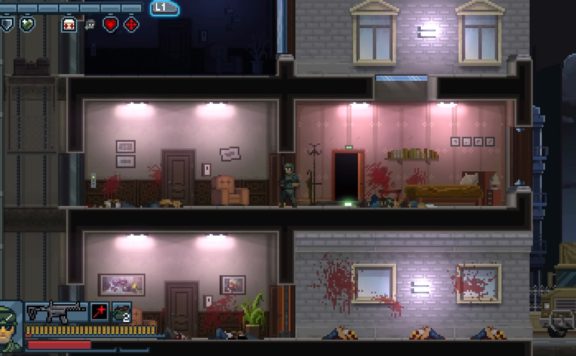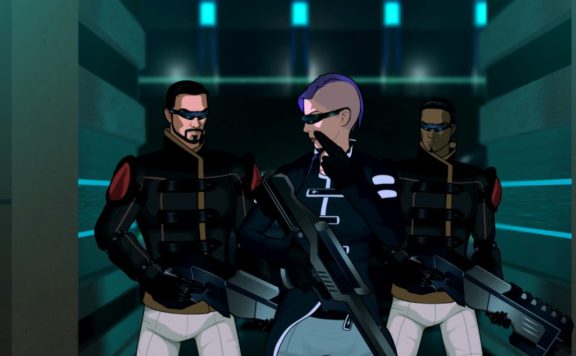Studio Mundfish released their long-awaited title Atomic Heart, said to build on the legacy of Bioshock. To hype up the game, Focus Entertainment bought advertisement spaces in Times Square, released a playful trailer with Jensen Ackles, a variety of teasers featuring perky Soviet music, all to hint at what kind of atmosphere will await players once the game hits the shelves.
Atomic Heart is a story-driven linear shooter set in a semi-open world of alternate Soviet history. In this world, the USSR leaped far ahead in the technological sphere, leaving behind the entirety of the world with the creation of a new substance – “Polymer” – and the “Kollektiv” neural network. Additionally, this imaginary version of the country created a horde of exceptionally useful robots that helped the USSR to become one of the biggest countries of this alternative universe.
Before we proceed onward, I want to note that the game gripped me for the 40-ish hours I needed for a playthrough and left me extremely delighted. In my opinion, Atomic Heart can stand on par with such games as Bioshock or Prey.
The events of the game take place in an alternate historical moment where the USSR created an almost utopia, becoming the world’s technological leader. Dmitry Sechenov is a Soviet scientist that developed both the new Polymer substance that allows you to do incredible things as well as the Kollektiv neural network and the robotics that brought the country to a state where humans are almost gods and robots are their working arms and legs.
The protagonist of Atomic Heart is one Major Sergei Nechaev, call-sign “P-Three”, who personally serves Sechenov. On the launch day of Kollektiv 2.0, the Soviet’s secret research base Facility 3826 experiences a severe malfunction. The robots there turn on the combat mode and begin to slaughter anyone they see. P-3 is ordered to find the traitor that arranged for this and bring him alive to Sechenov to correct the situation.
The overall plot of the game might look very predictable at first, but after a relatively short introduction (5-6 hours or so), you begin to unveil more and more secrets and tiny but important details that turn everything you know upside down. The game has very few empty spaces, almost everywhere you go there are notes to read, dead people whom you can talk to, plot-relevant cutscenes and more. The final plot twist will likely leave you surprised but I cannot say more without delving into spoilers.
The game features a cast of expressive characters that fit its overall quirky “what if” atmosphere, from Granny Zina to Sechenov or Stockhausen. Every hero you meet has their own character, thoughts, behavior and even personal stories, going as far as the story of the Ballerina Robot Twins. It is only revealed close to the very end of the game, yet it can still strike you to the very core. All the seemingly not important things when it comes to being a shooter create a unique atmosphere and the world of Atomic Heart.
Right away I will note the incredible number of references, jokes and memes both on the subject of the USSR and Russian 90’s as well as the overall darkly humorous tone of the game. Admittedly, some of those might be harder to relate to if you haven’t grown up in this atmosphere and are unfamiliar with the culture: from the jokes about mittens and the protag’s intellect levels, to more local references like “Yura, we’ve lost everything” (addressing Yuri Gagarin and how Russia fell back in terms of space flight technologies). All of this creates the unique atmosphere of hellish irony, cynicism and biting humor.
Our hero, Major Sergei Nechaev aka P-3, is far from being a genius. He is a special service operative that retired after a traumatic incident and was later taken in as Comrade Sechenov’s personal agent. When it comes to situations that require a more nuanced approach, our protagonist is aided by a special gauntlet complete with artificial intelligence. P-3 can be crude and even frankly stupid at times, and that is when you need the aid of the gauntlet to explain things to the player by narrating them to the protagonist. In turn, P-3 can joke and argue with the gauntlet and even go as far as insult or make fun of it, which can reveal some interesting secrets down the line.
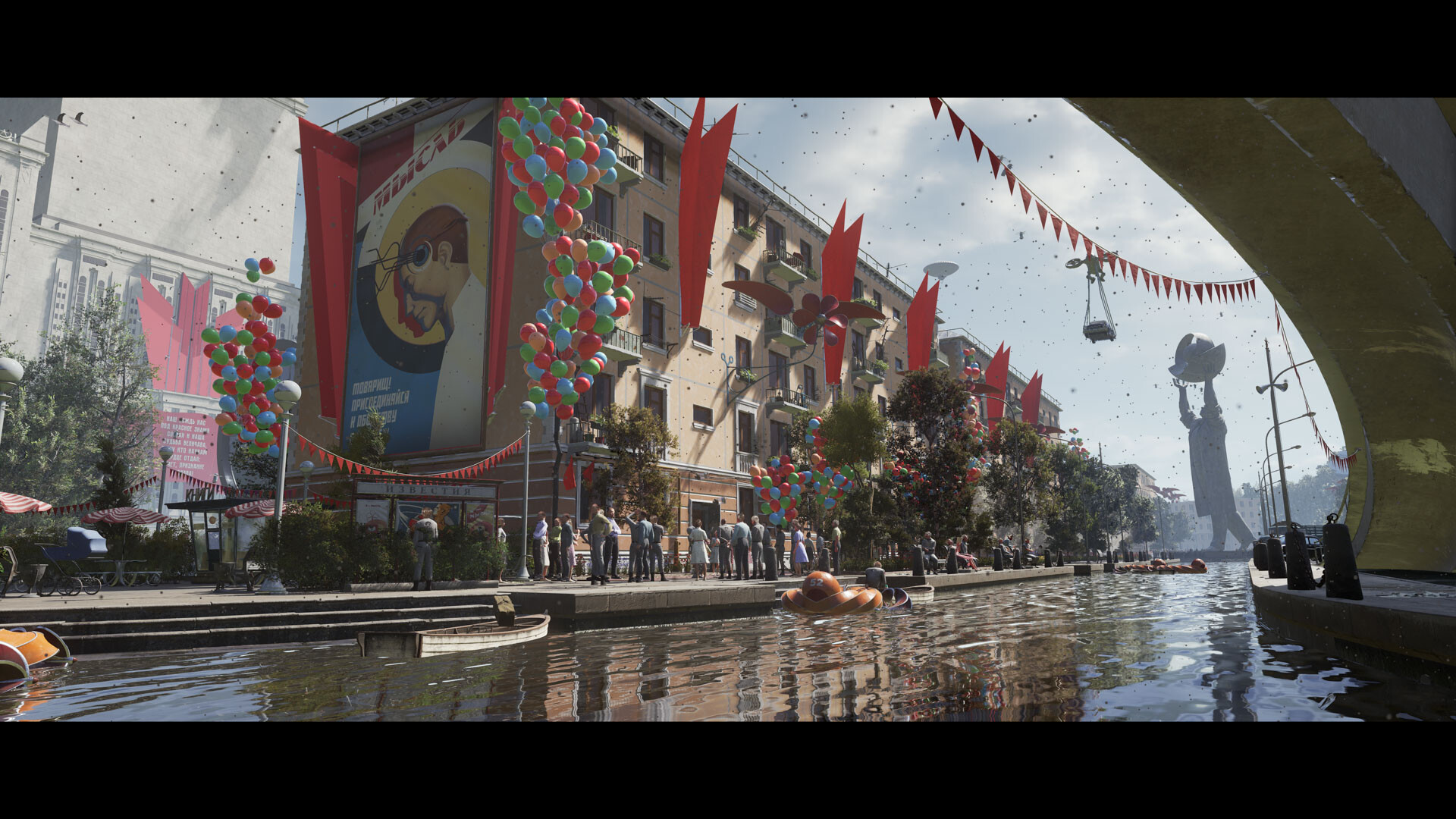
Separately, I want to highlight the music choice of the game. The game is quite something when it comes to its musical content: from Pugacheva, Baskov, Tsoi and other USSR/Russian performers to Beethoven’s Moonlight Sonata and music from Tchaikovsky’s The Nutcracker and tracks of Mick Gordon. The music of the game fits incredibly well into its unusual atmosphere.
“Harlekino”, “Starry Summer”, “Music Connected Us”, “Million Scarlet Roses” and many, many others have been processed and remixed to support the entourage of the game completely. There were multiple moments when I caught myself singing along with the game and later humming those songs to myself while doing chores. Just the moment at the hay station made me laugh out loud. Imagine a hay station with a bunch of robots that look like nesting dolls (matryoshkas) with scythes. Suddenly you can hear Pesnyary’s song “Yas Mowing the Stable” (Песняры – “Косил Ясь Конюшину”) while the robots are quite purposefully trying to mow YOU.
There are dozens of situations like that in the game, if not over a hundred, where the music supports this slightly crazy atmosphere of futuristic retro and the flair of the USSR of the 50’s. Yes, you can point out that most songs used in the game are from a later time that is being portrayed but even that has an in-game explanation via the Radio of the Future. With the help of mathematical models, Sechenov University was able to predict what people will be listening to in the future and presented this music to the world.
Much like the music, the visual part of the game impresses with its attention to details, atmosphere and overall beauty. Bright world filled with life can make players fall in love with it: colorful futuristic buildings, monuments of the Soviet architecture presented in a new, alternative version, different but still recognizable at a glance. The game shows what could have been, with its own twist.
However, venturing into Facility 3826, players will find themselves in completely different surroundings. Underground research complexes, huge greenhouses and smelters. Secret research facilities, a pseudo open world with a large number of functional buildings and residential villages, all filled with murderous robots that have gone mad, sent into combat mode by a traitor’s hand.
The game will offer large swathes of space both for battles and exploration. Players will run into blood, corpses, robots and polymer spilled in bizarre shapes. Each location is replete with such details and nuances. After you are done fighting against the robots, you can spend a ton of time exploring locations, finding secret notes and voice messages. The battles are similarly visually dynamic and diverse, with enemies sporting cuts and holes from shots as well as burns from lightning and other effects from battles that depend on the weaponry and abilities used by P-3. I can’t say that the entirety of the world is that reactive, but the important bits are.
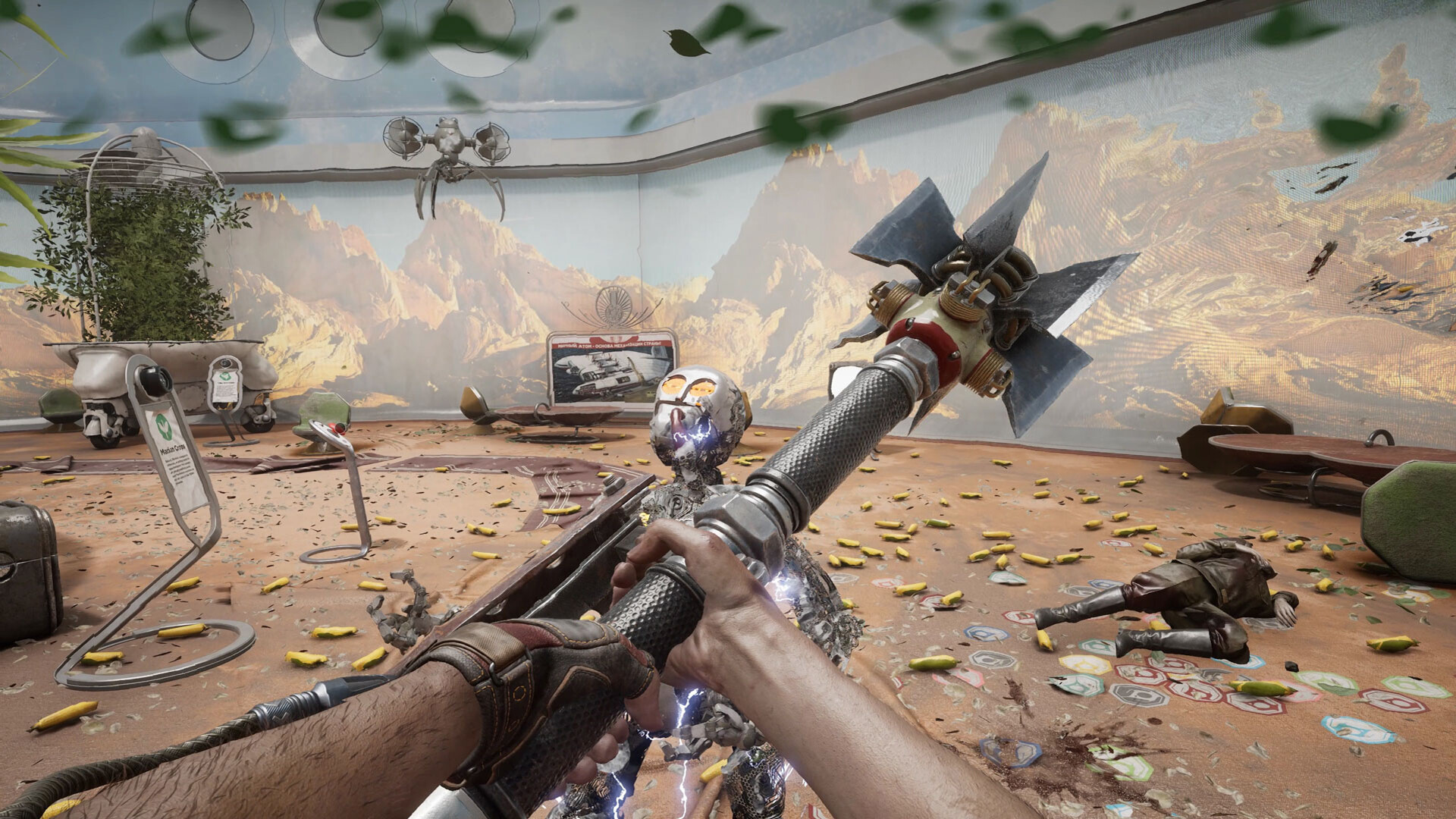
The game features 3 classes of weapons: melee weaponry, firearms and energy-based weapons. Hits with melee weapons fill up the energy bar for the energy weapons, and firearms are quite good at piercing enemies (but not all of them). At first, you will have access to a small list of recipes to start with, but if you are ready to spend your time exploring secret bunkers and the back rooms of the complexes, you will find more blueprints for weapons and upgrades.
For example, an ordinary Kalashnikov assault rifle can be upgraded into quite a monstrosity with a huge damage… but only after you have explored three different secret bunkers and collected an entire mountain of resources for crafting. However, it’s worth it. A regular Machete or Cudgel can be similarly turned into a magnetic lawn mower that will let you cut swathes of enemies from a distance.
Additionally, special cassettes can be installed in each weapon which will deal supplement elemental damage, however, the connection slot will need to be upgraded as well. Robots are easily succumbing to the electric damage while monsters and plants have a hard time against fire. Freezing is the ultimate way that affects everyone without prejudice, allowing you to easily control crowds of enemies.
The battle system is further expanded with Charles, the gauntlet AI, since it has a variety of functions including but not limited to the battle polymer gauntlet. At the same time, you can install 2 out of 5 abilities:
- You will always have the Shock ability, a small electric attack that will likely save your life more than once. It is one of the main skills of the gauntlet, and it stuns robots and turns off cameras.
- Chill will help you freeze enemies, and it works both on the robots and on the organic creatures. When enhanced, it will deal significant damage and even allow you to collect more spare parts from the enemies.
- Telekinesis is a great ability that allows you to control a number of enemies to, for example, lift them into the skies all at once and then shoot them down in good time. When enhanced to a certain degree, it can also affect bosses.
- Polymer mass allows you to splatter an enemy with a polymer gel-like liquid that increases the conductivity of elemental attacks. Even bosses, that usually have strong defense against standard abilities, can be frozen or set on fire after using the polymer mass.
- Polymer shield is able to protect you against anything that attempts to attack you, including projectiles. It is a very handy ability on the Hard level of difficulty.
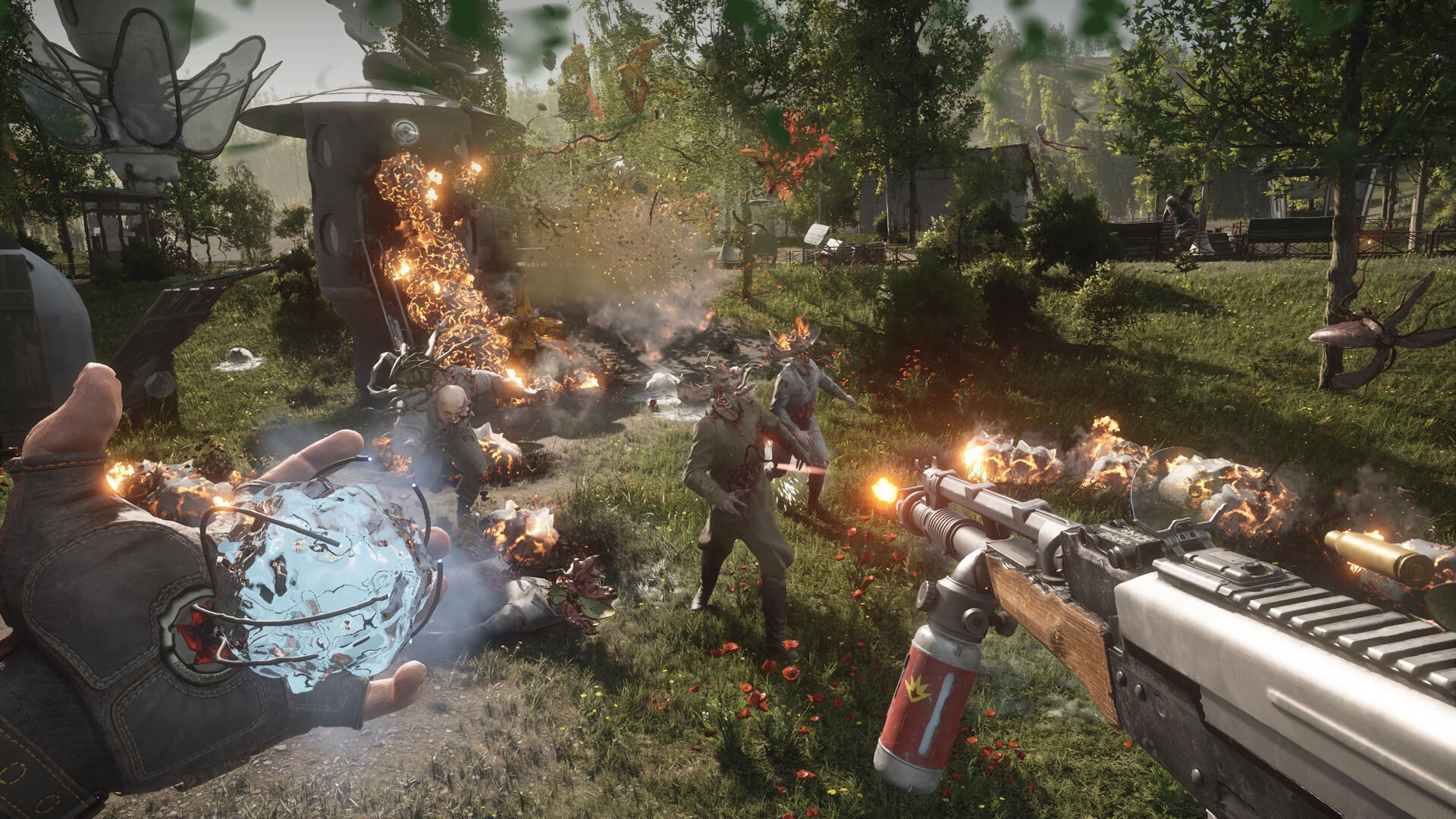
In addition to leveling up your abilities, you will also be able to enhance the gauntlet/the protagonist. And, much like abilities, leveling up your hero is also useful and interesting and comes with inventory expansion, reduction of damage taken, increase of damage done and much more.
At first the combat sequences can be quite hard since you have very little ammo, no abilities and a limited selection of weapons. Robots and monsters act like bullet sponges and simply soak up your damage while P-3 gets hit hard and a lot. However, getting new weapons and enhancing the ones you already have makes the whole experience much more fun. Lift a bunch of enemies into the air, pull out a rocket launcher and shoot them down? Easy. Freeze a robot mid-jump and break it into pieces? Quite enjoyable. Set a bunch of plants on fire and look on as they explode? Just let me grab my popcorn. The more you level up, the easier and more enjoyable it becomes. However, if you are someone that just wants to run through the main plot without all of this grinding and exploring, you will have to adapt to survive with what little you have found naturally.
In addition to the battle system, Atomic Heart also features the Kollektiv system that connects robots into a single network, a collective. Leaving the training complex, you will run into the fact that catching the eye of a camera will cause an alarm, and everyone and everything will come rushing to you afterward.
The alarm is divided into a few levels. First, upon noticing you, the camera will give an order to the nearest robots to destroy you. If they do not manage to succeed, it will move to the next level and the Kollektiv system will send out reinforcements that will be thrown at the player by flying robots. The opponents will be flying from the nearest factory instead of appearing out of thin air, so you have some breathing room for maneuvers and attempts to leave the battlefield without a fight.
That will cause the “bee” repair drones to fly out from the hives to attempt and restore the robots damaged by the player character. There is a way to use the system against itself: the windmills provide energy to the “vulture”, a generator flying in the sky that can be turned off using the terminal. Do so, and the operations of Facility 3826 in the area of the generator will be disrupted: the cameras will stop working, and the bee-robots will attempt to fix the problem with the “vulture”. Factories that are behind the reinforcements will stop functioning for a time as well, preventing enemies from appearing in locations for that period.
The territory of the Facility holds secret training grounds, the special research centers with challenges that store improvements for players’ weapons. Each polygon is unique in its own way, and first you will have to find the entry point into those bunkers. To do so, you will likely have to explore the surroundings and complete certain puzzles. The puzzles are not over outside, however, the polygons themselves have a variety of puzzles of varying degrees of complexity and the further you go, the more elements and mechanics need to be used at the same time.
Lustful BDSM cabinet Eleanor allows you to upgrade and create weapons. While the overall number of modification options is not great, it is still enough for a picky player. Various options for barrels, blades, attachments, and others will allow you to adjust any weapon to your preferred play-style. And even changing from one upgrade to another, you will get the resources back so there will be no need to grind anew to test weapons.
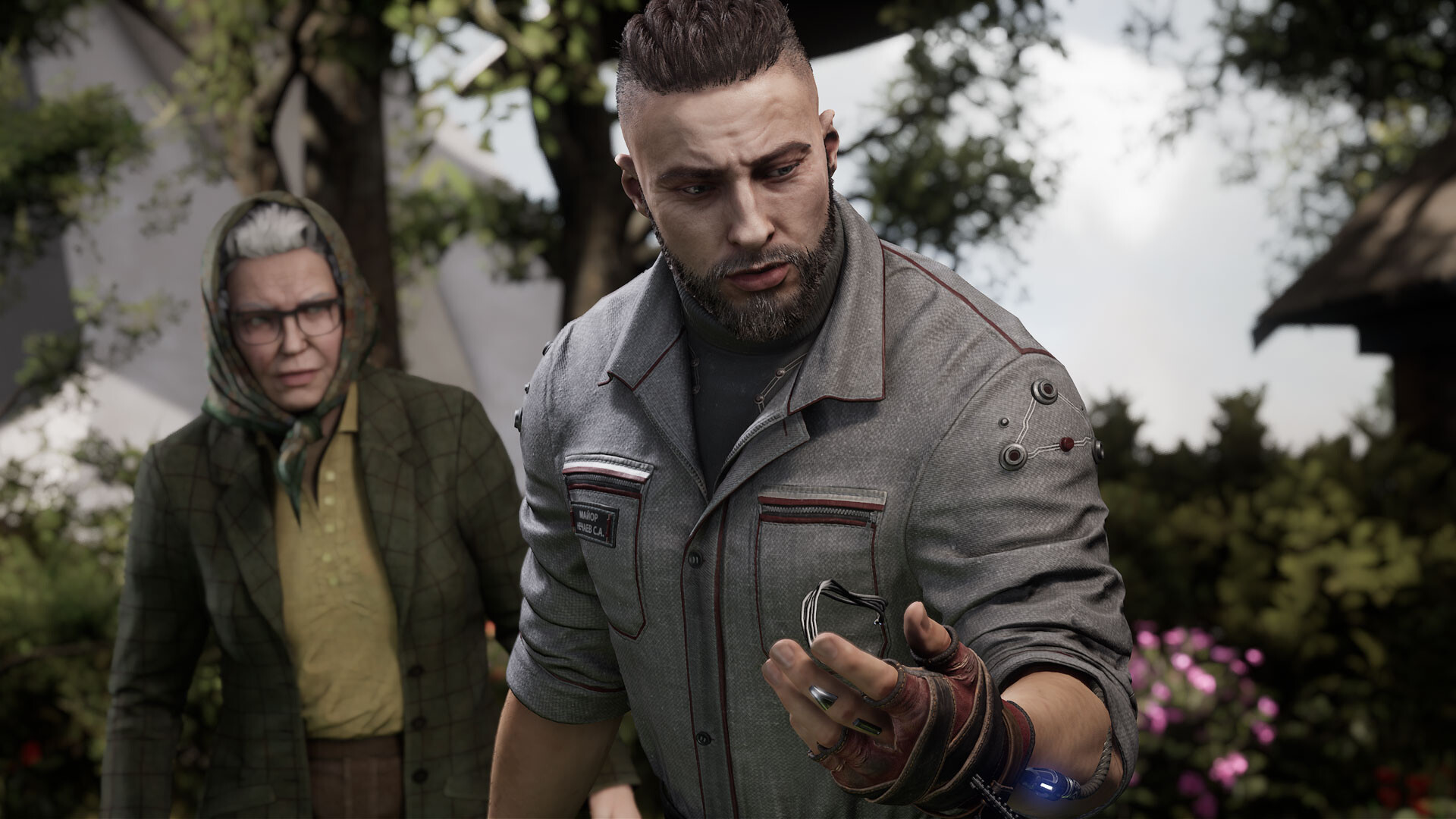
Remembering a lot of the recent AAA-releases, you might notice one thing in common: many of them were nigh unplayable at the start. At the moment, Atomic Heart can be played on good settings without any FPS drops and crashes or freezes or other sins of the release versions. Both on Nvidia 1060 & Intel i5 and Nvidia 3080 & i7, the game allows for 60 FPS almost everywhere with slight dips due to a large number of robots around. Even with the screen being flooded with polymer, fire and dozens of explosions, I have rarely seen FPS going lower than 45. There were some bugs such as some texture glitching out or a wild crash happening once in a great while, but I have not seen any bugs that have prevented me from proceeding with gameplay.
To sum it up, the 40 hours I spent in Atomic Heart the game has been keeping me in rapture – and not the Bioshock kind of Rapture! The story, the battle system, the visuals and environment is meticulously put together. Sure, there are certain drawbacks such as an empty pseudo-open world or the protagonist acting like an idiot with his quite limited vocabulary, but compared to the overall game those are just trifles.
As far as I personally am concerned, the plot is rather short and raises more questions over providing answers, obviously hinting either at the future DLCs or a sequel, but it doesn’t affect you until after you’ve beaten the game. Atomic Heart was made with love, talent and a great deal of cynic humor poured into the game. However, quite a few references and jokes might be hard to understand if you weren’t raised in the post-USSR space and culture.
What are your thoughts on Atomic Heart? Let us know in the comments below!
- Similar to: Bioshock
- Note: the Steam copy of the game is a verified purchase by the author



